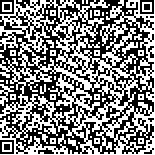| 摘要: |
| [摘要] 目的 探讨胎儿肢体畸形(FLM)产前超声诊断与染色体异常的关联性。方法 选择2017年1月至2019年12月内蒙古自治区妇幼保健院经产前超声检查诊断为FLM的胎儿230例,其中56例自愿行染色体检查。总结产前超声检查结果,分析其与染色体异常的关联性。结果 230例FLM中,单一肢体畸形191例(83.04%),复合肢体畸形39例(16.96%)。有55例(18.27%,55/301)于14~19孕周发现,208例(69.10%,208/301)于20~24孕周发现。合并其他系统畸形96例(41.74%),多为合并2种及以上其他系统畸形。本研究超声诊断FLM总项目数达301例,经引产及分娩后证实漏诊32例,误诊7例。漏诊畸形中以多指(趾)占比最高(40.63%);误诊7例,其中足内翻误诊3例,手姿势异常4例,均为一过性异常。56例染色体检查结果显示,有31例存在染色体异常情况,其中18-三体15例,21-三体9例,其他类型染色体异常7例。18-三体FLM中出现重叠指9例,全部18-三体FLM均合并其他系统畸形。21-三体FLM中以指骨缺失多见(8例)。结论 中孕期产前超声对FLM具有较高的检出率,但对于多指(趾)、并指(趾)等微小畸形仍较难检出。FLM与染色体异常具有一定的关联性,其可作为胎儿侵入性染色体筛查的指标。 |
| 关键词: 产前超声检查 胎儿肢体畸形 染色体检查 |
| DOI:10.3969/j.issn.1674-3806.2021.12.15 |
| 分类号:R 715.5 |
| 基金项目:内蒙古自治区卫生健康委科研计划项目(编号:201703070) |
|
| A study on the relationship between prenatal ultrasound diagnosis of fetal limb malformations and chromosomal abnormalities |
|
LI Xin-ze, LIU Guo-hui, LIU Min, et al.
|
|
Department of Ultrasound, Maternal and Child Health Hospital of Inner Mongolia Autonomous Region, Hohhot 010020, China
|
| Abstract: |
| [Abstract] Objective To explore the relationship between prenatal ultrasound diagnosis of fetal limb malformations(FLM) and chromosomal abnormalities. Methods Two hundred and thirty fetuses diagnosed as FLM by prenatal ultrasonography at Maternal and Child Health Hospital of Inner Mongolia Autonomous Region from January 2017 to December 2019 were selected, and 56 fetuses′ mothers voluntarily underwent chromosome examination. The results of prenatal ultrasonography were summarized and the relationship between the results of prenatal ultrasonography and chromosomal abnormalities was analyzed. Results Among the 230 cases of FLM, 191 cases(83.04%) had single limb deformity and 39 cases(16.96%) had compound limb deformity. Limb deformities were found in 55 cases(18.27%, 55/301) in 14-19 gestational weeks and 208 cases(69.10%, 208/301) in 20-24 gestational weeks.Ninety-six cases(41.74%) were complicated with malformations of other systems, most of which were complicated with malformations of two or more other systems. The total number of FLM diagnosed by ultrasound in this study reached 301 cases. After induced labour and delivery, 32 cases were confirmed to be missed and 7 cases were misdiagnosed. Polydactyly(toe) accounted for the highest proportion of missed deformities(40.63%); 7 cases were misdiagnosed, including 3 cases of varus foot misdiagnosis and 4 cases of abnormal hand posture, and all of these abnormalities were transient. The results of chromosome examination in 56 cases showed that 31 cases had chromosomal abnormalities, including 15 cases of trisomy 18, 9 cases of trisomy 21, and 7 cases of other types of chromosomal abnormalities. There were 9 cases of overlapping fingers in the 18-trisomy FLM, and all the 18-trisomy FLM were complicated with other system malformations. Phalange loss was common in the 21-trisomy FLM(8 cases). Conclusion Prenatal ultrasound in the second trimester of pregnancy has a high detection rate for FLM, but it is still difficult to detect minor deformities such as polydactyly(toe) and syndactyly(toe). FLM has a certain correlation with chromosomal abnormalities and can be used as an indicator of fetal invasive chromosome screening. |
| Key words: Prenatal ultrasonography Fetal limb malformations(FLM) Chromosome examination |

